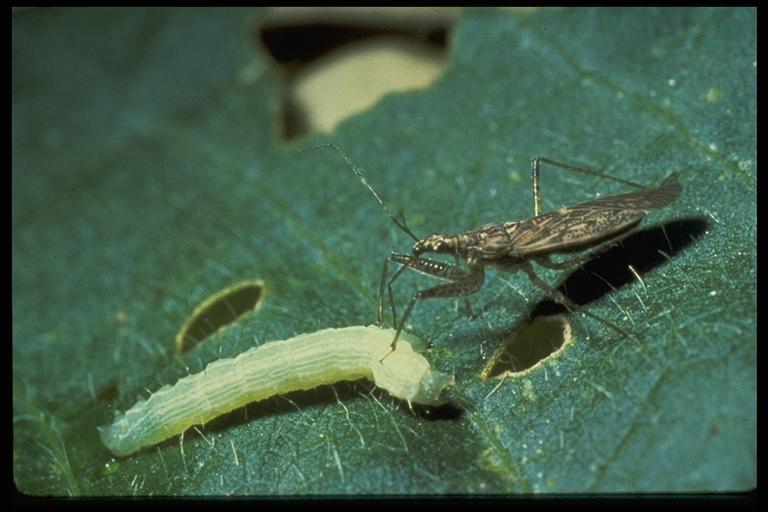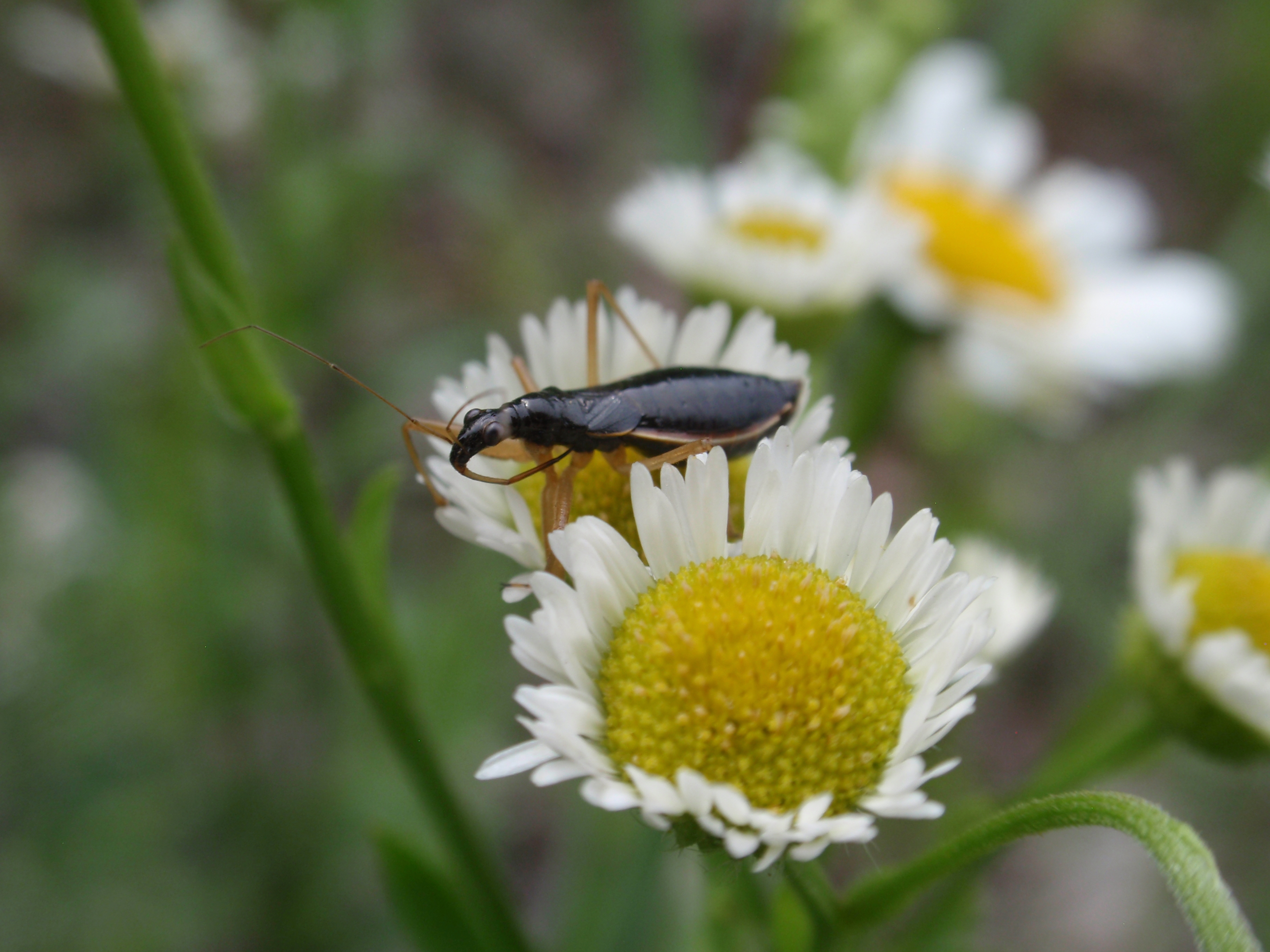Michigan insects in the garden - Season 2 Week 2: Nabidae
Damsels who cause distress to other insects.

The mouthpart an insect uses cannot determine whether an insect is beneficial or a pest. Many smaller insects in the Order Hemiptera use their piercing-sucking mouthparts to feed on plant sap. However, this Order also includes a few predatory insects such as the damsel bugs (family Nabidae) or nabids.
Damsel bugs are not picky in finding prey to eat, accepting small caterpillars, mites, insect eggs including tarnished plant bug and soft-bodied adults including leafhoppers and aphids. Occasionally, nabids will feed on other beneficial insects such as minute pirate bugs and assassin bugs. In the vegetable garden, damsel bugs provide protection to plants in the tomato family (Solanaceae) and cucumber family (Cucurbitaceae) by feeding on important pests of those plants.
Identifying damsel bugs
All nabids have a narrow body, a curved beak or piercing sucking mouthparts that has four segments (Photo 1), a slightly enlarged front leg, and short veins on the end of their wings. Before feeding, damsel bugs use their mandibles to attack prey items. Since damsel bugs undergo incomplete metamorphosis, both the immatures (nymphs) and adults can feed on other insects.
Thirteen species occur in Michigan, and identification resources as well as a key are available in Swanson’s (2012) article on Damsel Bugs of Michigan. The most common species, Nabis subcoleoptratus and Nabis roseipennis, are distributed throughout the Upper and Lower Peninsula. Damsel bugs are found between June and September and have multiple generations each season. Females lay up to 200 eggs that develop into nymphs within eight to 12 days.
Small in size at only 0.1 – 0.5 inches, nabids do not consume hundreds of food items per day. One study found that nabids consume approximately four squash bug nymphs per week. However, many damsel bugs consuming a few insects a day can gradually reduce insect pest populations in the garden (Photo 2).

They are sometimes mistaken for assassin bugs but have one extra segment on their beak (four) compared to the three-segmented beak of an assassin bug. Since damsel bugs are a smaller predator, they are sometimes consumed by larger predators such as ground beetles and wolf spiders. While most damsel bugs are light grey, a few species have a black thorax and abdomen (Photo 3).

Where can you find nabids?
Keeping a wildflower garden or a small, undisturbed area in the garden helps encourage beneficial insects such as damsel bugs to remain in the garden. They spend the winter in leaf litter. Nabids are not easily noticed in the garden since they prefer to stay in areas of brush or grass close to or just above the ground and wait for food items. At nighttime, some gather around porch lights.
Nabids fly, and some studies report finding them at 1,000 feet or higher, captured by prevailing winds. In vegetables and field crops, nabids are captured with the aid of an insect sweep net.
Damsel bugs are part of the larger system of predatory insects that contribute to natural control of insect pests and should be left alone when encountered.



 Print
Print Email
Email










